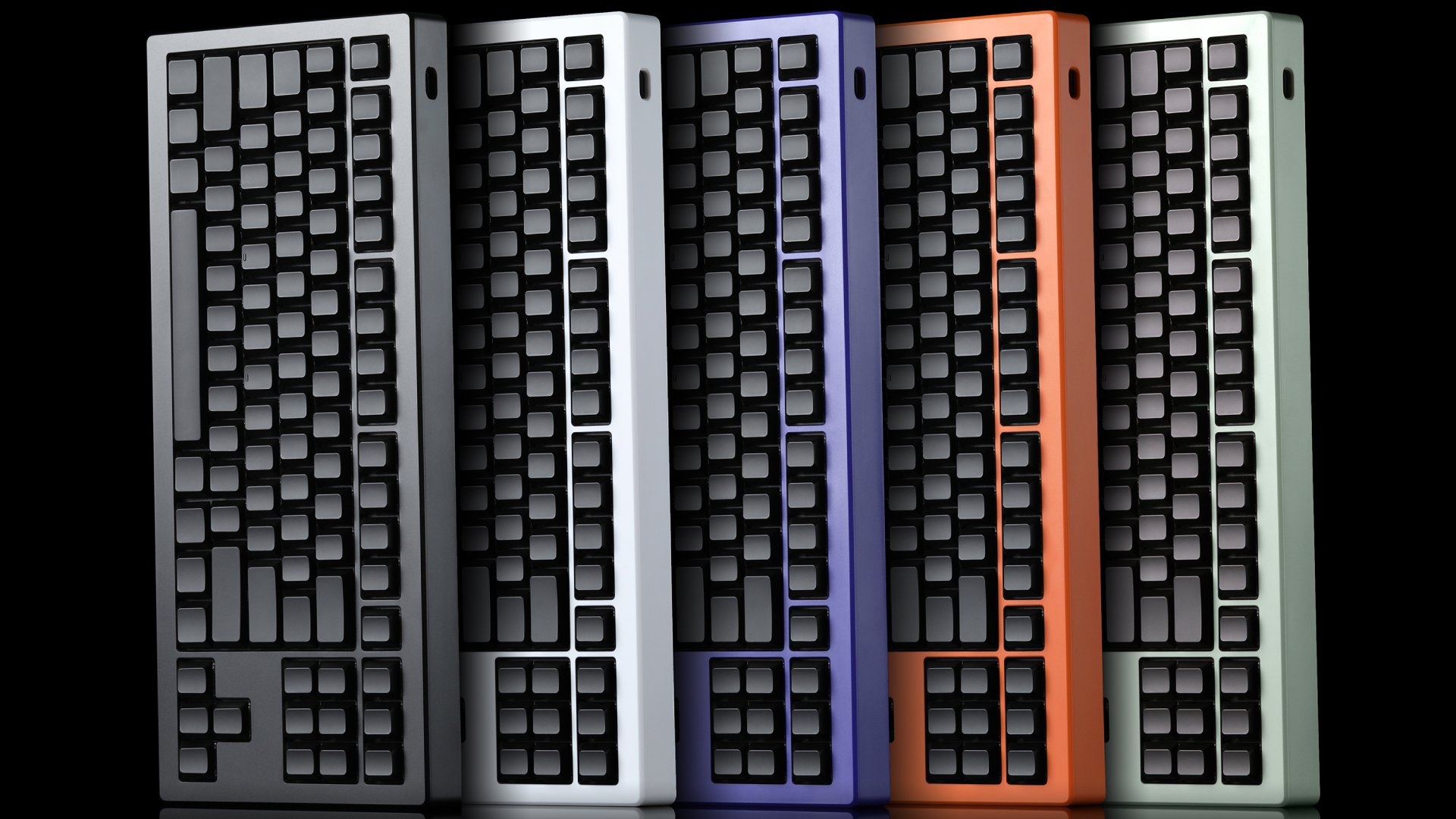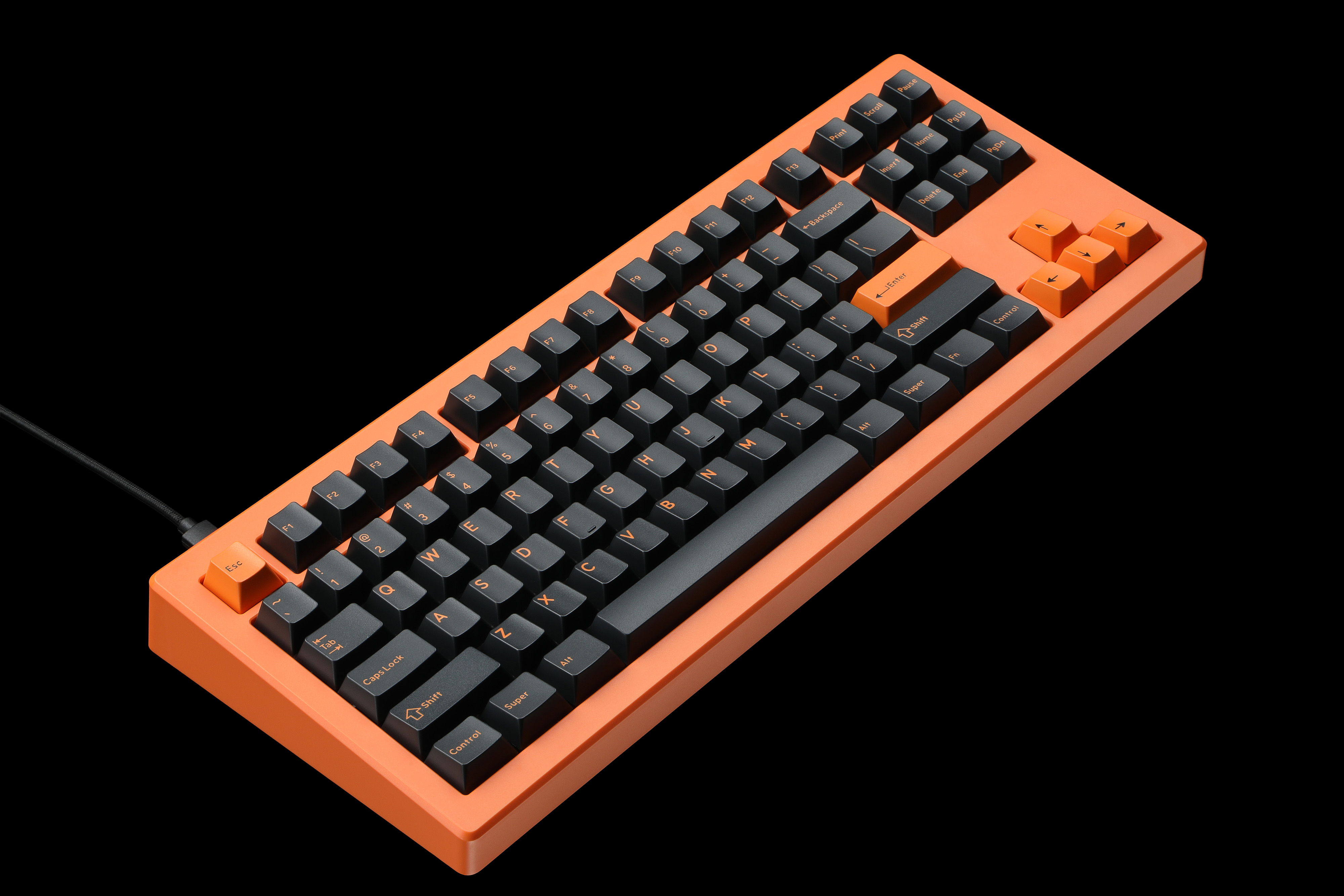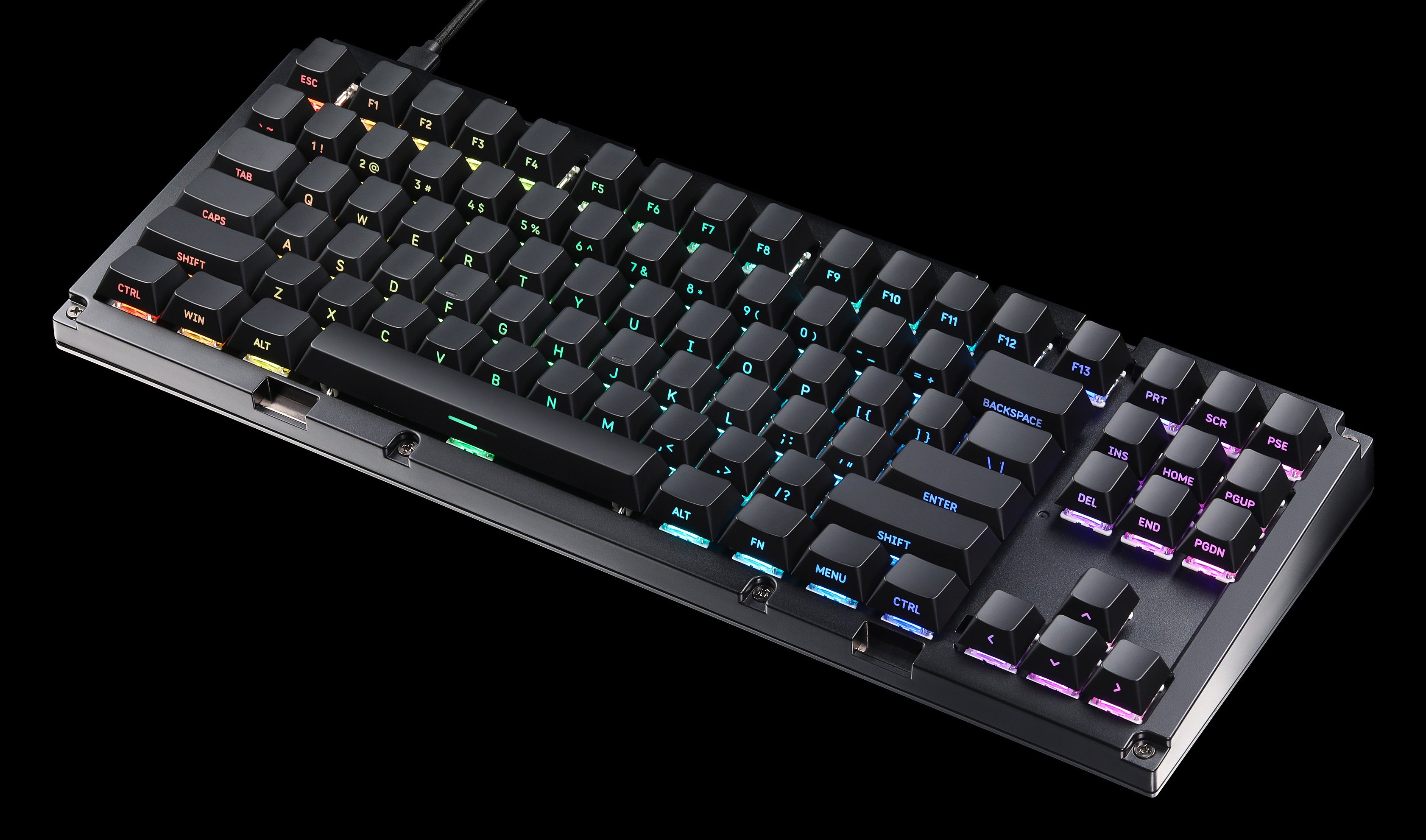Drop's new customizable keyboard has quick-swap magnetic cases
Lots of colors, just try not to think about the cost.

Sick of the sight of your keyboard? Well, you won't be with the new Drop CSTM80 thanks to its novel quick-swap top case.
The CSTM80 is a tenkeyless board with a magnetic top case allowing for super-swift swaps. Simply pull the top case off and drop a different one on for a pretty comprehensive change in visual vibe. The standard fully-assembled CSTM80 comes with a black polycarbonate case for $149.
You can also choose from white, black, Laser Purple, Skiidata Orange, and Jasmine Green polycarbonate cases for $25 a pop. If you fancy something slightly more substantial, anodized silver and black aluminum top cases go for $59 each.
If the swappable top case is the main attraction, the rest of the package looks decent, too. Highlights include the gasket-mounted design, per-key RGB LEDs, custom ABS south-facing keycaps with shine-through side legends optimized for south-facing switches, PCBA mounted stabilizers, customizable weight and 5-pin switch support.
Oh, and you can also choose from Gateron Brown Pro 3.0 or Gateron Yellow KS3 key switches. The CSTM80's gasket-mount design, of course, is designed to provide a more cushioned, premium feel compared with more conventional fixed-plate designs, including Drop’s own V2 boards.



It involves a a dampening material inserted between the top frame housing and keys and the lower case, softening the end point of the keystrokes.
A barebones CSTM80 is also available for $99. But the cost of adding not only the top case but also the keycaps, stabilizers and switches probably won't make for a sensible value proposition. Better to buy the fully-built board and customize from there.
Keep up to date with the most important stories and the best deals, as picked by the PC Gamer team.
Of course, the keycaps are also full customizable, so the net result is a full modular keyboard that can be adjusted for look and feel pretty much the, well, board. A bargain it probably isn't. But the customizable element certainly adds to the appeal as a long-term investment.
Best CPU for gaming: Top chips from Intel and AMD.
Best gaming motherboard: The right boards.
Best graphics card: Your perfect pixel-pusher awaits.
Best SSD for gaming: Get into the game first.

Jeremy has been writing about technology and PCs since the 90nm Netburst era (Google it!) and enjoys nothing more than a serious dissertation on the finer points of monitor input lag and overshoot followed by a forensic examination of advanced lithography. Or maybe he just likes machines that go “ping!” He also has a thing for tennis and cars.


